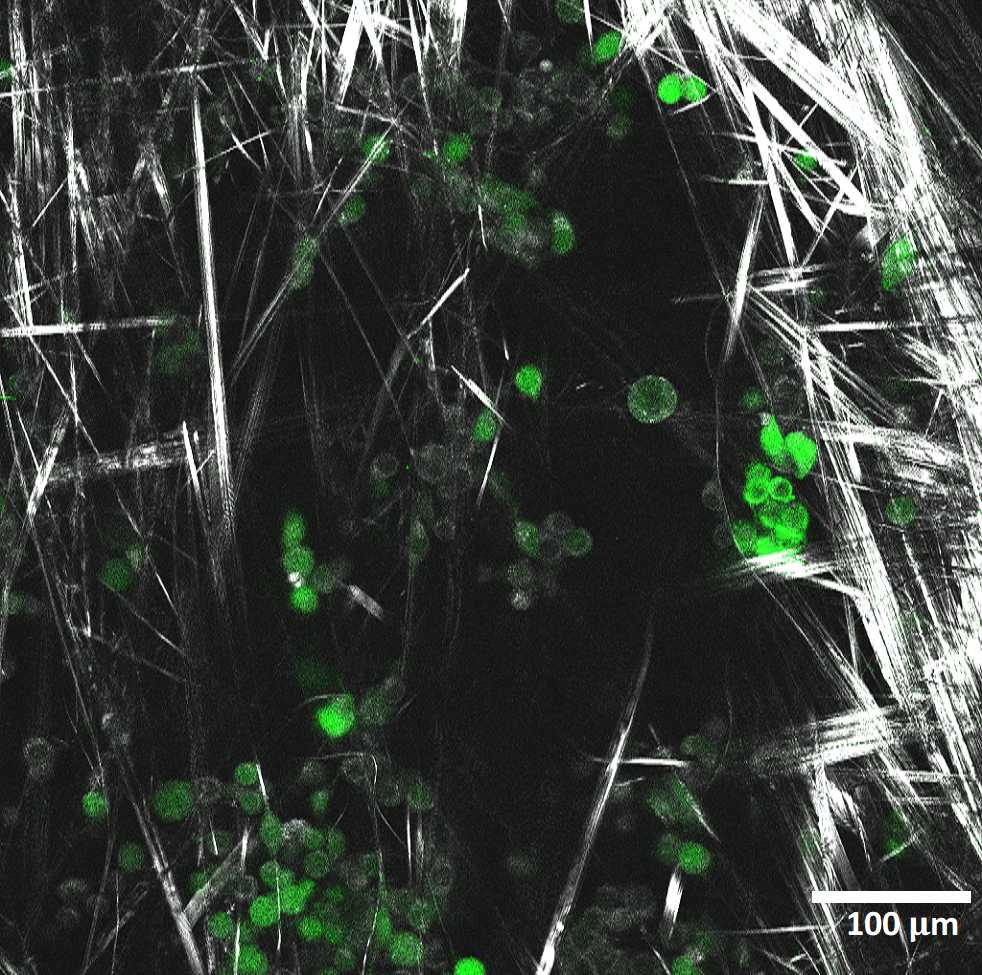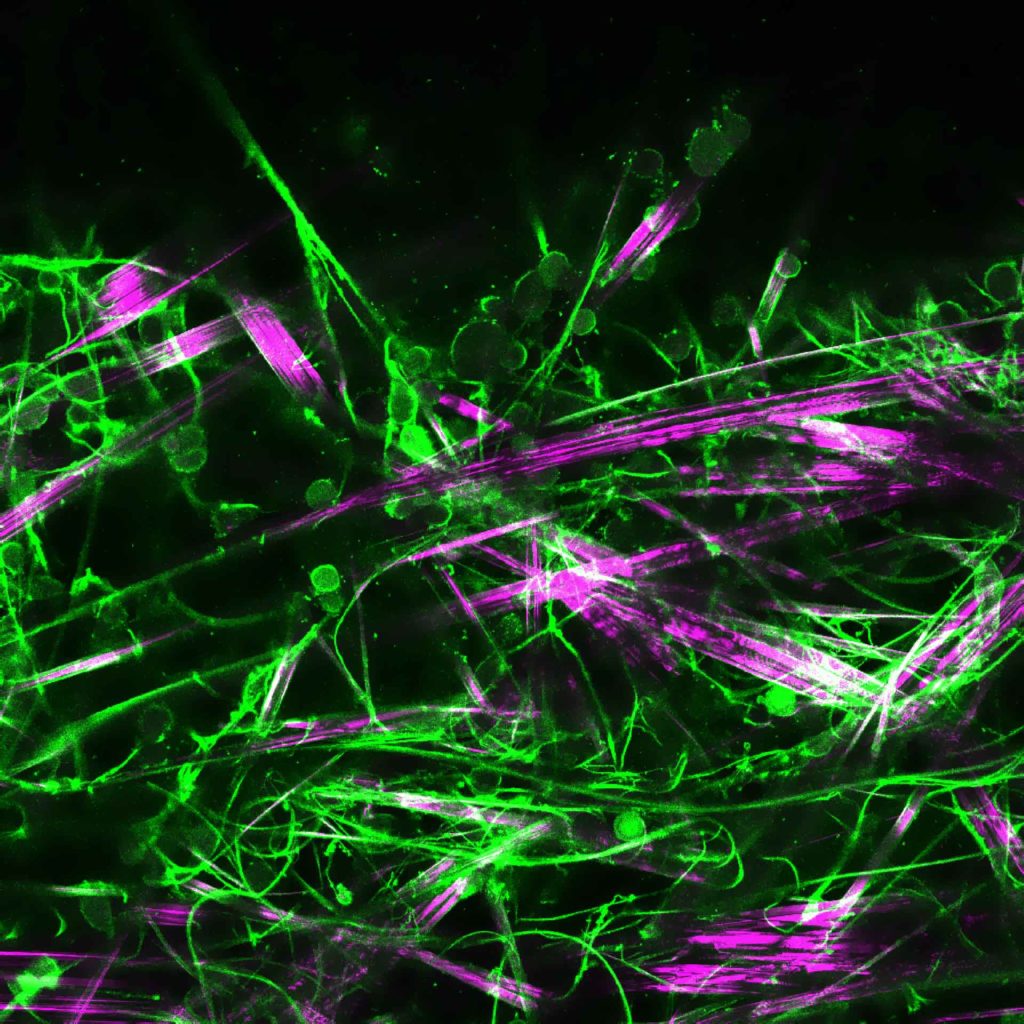Scaffolds for cell culture
N-heptyl-D-galactonamide, a small sugar-based amphiphile, gives biocompatible hydrogels. They have been used as scaffolds for neuron cell culture.


Publications
- Chalard, A.; Vaysse, L.; Joseph, P.; Malaquin, L.; Souleille, S.; Lonetti, B.; Sol, J.-C.; Loubinoux, I.; Fitremann, J. Simple Synthetic Molecular Hydrogels from Self-Assembling Alkylgalactonamides as Scaffold for 3D Neuronal Cell Growth. ACS Appl. Mater. Interfaces 2018, 10 (20), 17004–17017.




Neurons network (left) and neurosphere (right) of adult Human Neural Stem Cells (hNSC) (7 days, green immunofluorescent marker : Tuj1), after dissolution of the N-heptyl-D-galactonamide hydrogel.
Glial cells from adult Human Neural Stem Cells (hNSC) (7 days, green immunofluorescent marker : S100B), after dissolution of the N-heptyl-D-galactonamide hydrogel.
